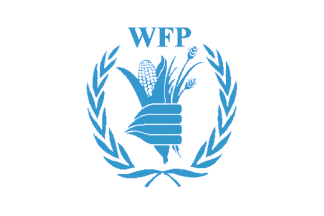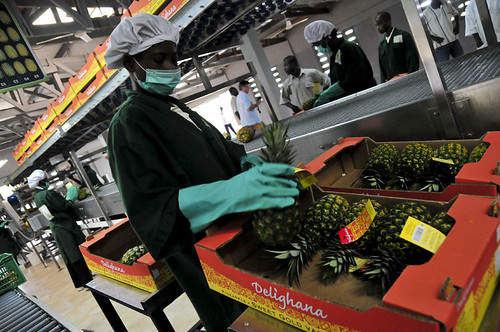I don’t usually write follow up posts, though I received a thought-provoking comment from longtime Develop Economies reader Ed Center on my post about the negative impacts of NGOs on economic development in Northern Ghana. It is worth quoting in full:
This insight then begs the question; why are you working for an NGO in Ghana?
I have a friend in Cambodia who went to an excellent school that provides education and job skills to street kids. The thing is, he isn’t a street kid. He lied so that he could get a better education than is offered in the sad public school system. There are some excellent NGOs in Cambodia, particularly in education and heath, but does this cluttered network take the onus off the government and private sector to teach and care for the people? Do foreign NGOs crowd the space that local public and private sectors should occupy? Or without these NGOs, would my friend have gotten a crappy education? Without NGOs, do more babies die and more people go ignorant?
And what is the strategy when the answer to all these questions seems to be yes?
It is true that I am currently working for an NGO doing agriculture economic development work here in Ghana. But it is worth noting that the project I’m working on takes the negative effects of its predecessors into account in its approach. It is a market facilitation project, which emphasizes making linkages in the private sector, and working with companies to develop business models that are more profitable and scalable. The underlying premise is that, beyond a lack of financial resources and technical capabilities, there are basic communication gaps between value chain “actors.” This requires some explanation.

 Old habits die hard, and the motor patterns in my fingers that brought me to the Drudge Report so many times when I worked in a cubicle in Boston once again led me to page the other day. Living up to its reputation for sensationalism, it
Old habits die hard, and the motor patterns in my fingers that brought me to the Drudge Report so many times when I worked in a cubicle in Boston once again led me to page the other day. Living up to its reputation for sensationalism, it 
 Yesterday I met with the founder of a pineapple exporting company in Ghana. He is one of the first pineapple exporters in the country, opening his operation in 1985. He is one of the founding members of Seafreight Pineapple Exporters Group (SPEG), and is the organization’s first chairman. He was trained as a pharmacist and originally went into pineapple export because he needed to acquire foreign exchange in order to purchase pharmaceuticals from abroad for his pharmacy business, and realized he was in the wrong business. Ghana was sitting on a gold mine with pineapples, yet no one had noticed it. He recognized that the proximity of West Africa to Europe – specifically, the UK and Germany – and the climate of Ghana made for a strong value proposition for growing pineapple. This man, along with a small group of primarily businessmen with no prior farming experience, established the export market for pineapples in Ghana.
Yesterday I met with the founder of a pineapple exporting company in Ghana. He is one of the first pineapple exporters in the country, opening his operation in 1985. He is one of the founding members of Seafreight Pineapple Exporters Group (SPEG), and is the organization’s first chairman. He was trained as a pharmacist and originally went into pineapple export because he needed to acquire foreign exchange in order to purchase pharmaceuticals from abroad for his pharmacy business, and realized he was in the wrong business. Ghana was sitting on a gold mine with pineapples, yet no one had noticed it. He recognized that the proximity of West Africa to Europe – specifically, the UK and Germany – and the climate of Ghana made for a strong value proposition for growing pineapple. This man, along with a small group of primarily businessmen with no prior farming experience, established the export market for pineapples in Ghana.
 A few years ago, I used to subscribe to Harper’s Magazine. The lead article in one of the issues was titled “Let them eat cash: Can Bill Gates turn hunger into profit?” It seemed interesting, but couldn’t really understand much of it at the time, since I didn’t know anything about food aid policy, or development in general. Just the other day I met someone who is working with the World Food Program’s Purchase for Progress program out here in Ghana. She asked me what I thought about the WFP and food aid in general. So I gave her my typical screed about food aid providing a market for surplus corn and soyabean production in the United States while calling it aid. And I talked about how flooding the market with low-cost (or no-cost) food may be necessary in the short-term, but is counterproductive in the long-run, since it undermines the competitiveness of the private sector in the areas where it is delivered and leaves the market in a state of atrophy. The conversation reminded me to go back and re-read the article. This time, I understand it much better.
A few years ago, I used to subscribe to Harper’s Magazine. The lead article in one of the issues was titled “Let them eat cash: Can Bill Gates turn hunger into profit?” It seemed interesting, but couldn’t really understand much of it at the time, since I didn’t know anything about food aid policy, or development in general. Just the other day I met someone who is working with the World Food Program’s Purchase for Progress program out here in Ghana. She asked me what I thought about the WFP and food aid in general. So I gave her my typical screed about food aid providing a market for surplus corn and soyabean production in the United States while calling it aid. And I talked about how flooding the market with low-cost (or no-cost) food may be necessary in the short-term, but is counterproductive in the long-run, since it undermines the competitiveness of the private sector in the areas where it is delivered and leaves the market in a state of atrophy. The conversation reminded me to go back and re-read the article. This time, I understand it much better.
 The pineapple sector in Ghana is interesting. Unlike maize, rice, and, to a lesser extent, soyabean, which are all considered staple crops, fruits, including pineapple, mango, and citrus (oranges) are cash crops for which there is an export market. In mango, for example, there are a few companies and independent traders (usually Lebanese) with export markets in the UK, Europe, and the Middle East. More often than not, exporters in the country are either foreigners or Ghanaians who have lived abroad. The reason for this is simple: the person with the most leverage in this industry (aside from the massive retail supermarkets who can literally sink an industry in a matter of years) are those with access to markets. Production is cheap, and production is easy. It is finding someone to buy your products that is the hard part.
The pineapple sector in Ghana is interesting. Unlike maize, rice, and, to a lesser extent, soyabean, which are all considered staple crops, fruits, including pineapple, mango, and citrus (oranges) are cash crops for which there is an export market. In mango, for example, there are a few companies and independent traders (usually Lebanese) with export markets in the UK, Europe, and the Middle East. More often than not, exporters in the country are either foreigners or Ghanaians who have lived abroad. The reason for this is simple: the person with the most leverage in this industry (aside from the massive retail supermarkets who can literally sink an industry in a matter of years) are those with access to markets. Production is cheap, and production is easy. It is finding someone to buy your products that is the hard part.
 For the last week I’ve been in Techiman, a city of 80,000 people and the leading market town in Ghana. Because it is situated near the Tano River, it has historical significance as a major trade route and is now home to the second-largest market in West Africa. Trucks from Mali and Niger come down here to distribute products to the rest of Ghana and other countries in West Africa. I am up here to meet some maize aggregators (middlemen) and try to figure out their margins. Most farmers accuse the aggregators of cheating them on prices, but no one knows for sure because the aggregators aren’t exactly forthcoming with their pricing arrangements and, even if they were, they don’t keep records so they can only tell you with any certainly about the last few purchases they maize. Not to mention, maize is absolutely crazy – the price might fluctuate from 25 Ghana cedis (Ghc) to 100 Ghc in a year. So it is a tough task, but I’m slogging my way through (right now, I have calculated 20-30% gross margins, 5-10% net margins, but who knows).
For the last week I’ve been in Techiman, a city of 80,000 people and the leading market town in Ghana. Because it is situated near the Tano River, it has historical significance as a major trade route and is now home to the second-largest market in West Africa. Trucks from Mali and Niger come down here to distribute products to the rest of Ghana and other countries in West Africa. I am up here to meet some maize aggregators (middlemen) and try to figure out their margins. Most farmers accuse the aggregators of cheating them on prices, but no one knows for sure because the aggregators aren’t exactly forthcoming with their pricing arrangements and, even if they were, they don’t keep records so they can only tell you with any certainly about the last few purchases they maize. Not to mention, maize is absolutely crazy – the price might fluctuate from 25 Ghana cedis (Ghc) to 100 Ghc in a year. So it is a tough task, but I’m slogging my way through (right now, I have calculated 20-30% gross margins, 5-10% net margins, but who knows). There are no glass manufacturing plants in Ghana, so these processors buy used bottles from companies that collect discarded bottles of
There are no glass manufacturing plants in Ghana, so these processors buy used bottles from companies that collect discarded bottles of  Global food production has rocketed in recent decades but has stagnated in many parts of Africa, despite the continent having “abundant” arable land and labour, says Professor Juma.
Global food production has rocketed in recent decades but has stagnated in many parts of Africa, despite the continent having “abundant” arable land and labour, says Professor Juma.